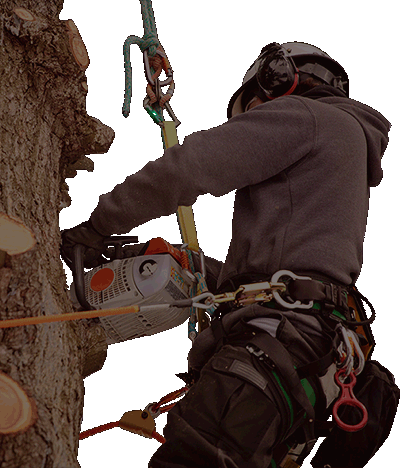
We love seeing our Spartanburg trees grow tall and wide, but their sprawling roots are harder to adore. Often unsightly, they can also be an obstacle and make lawn care a hassle.
In short, above-ground Spartanburg tree roots are a pain. Chances are you’ve thought about removing the roots altogether. Bad news, though. Pruning these roots often makes the Spartanburg tree unstable or unhealthy–and if done wrong, can kill the tree. So now what? Instead of cutting exposed Spartanburg tree roots, try covering them.
Browse this list to find the perfect way to cover your Spartanburg tree roots above ground.
Choosing the Best Way to Cover Exposed Tree Roots
Can you put grass or flowers over exposed Spartanburg tree roots?
While you can go this route, you may run into issues down the road. Ever wonder why grass or flowers under your Spartanburg tree die so fast? It’s because the tree’s shady canopy blocks other plants from getting enough sunlight. Plus, the Spartanburg tree roots take most of the water in the soil for themselves.
If you can find a grass or flower that thrives in the shade and needs little water, this may work. But it will be tricky!
Is it okay to add topsoil over Spartanburg tree roots growing above ground?
Adding topsoil over Spartanburg tree roots presents some problems, too. If you use the wrong soil or pack on too much, the Spartanburg tree won’t get enough water to stay hydrated. Plus, the roots will likely grow through the soil you just added before long.
In short, this doesn’t work well and won’t last.
How about covering with concrete?
Setting a few stepping stones is a smart way to make a path around the roots. Pouring a coat of concrete is a different story. Concrete blocks Spartanburg tree roots from oxygen and water. As time goes on, Spartanburg tree roots need fresh air, so they’ll again grow above ground. This time, they’ll crack the concrete, making a big mess.
Should I cover Spartanburg tree roots with mulch then? What about gravel?
Yes, in fact, mulch is the best way to cover Spartanburg tree roots above ground. When you add 2-3 inches of organic mulch, you get double the benefits. It gives your landscape a clean look and moisturizes and protects the roots.
You can sub in gravel as a low-maintenance alternative to mulch. Though there are some risks. Gravel can compact the soil and heat up the ground in summer, which causes problems. If you want to go with gravel anyway, cover the roots with landscape fabric and spread no more than two inches of gravel for the best results.






